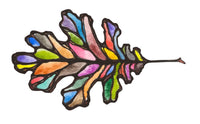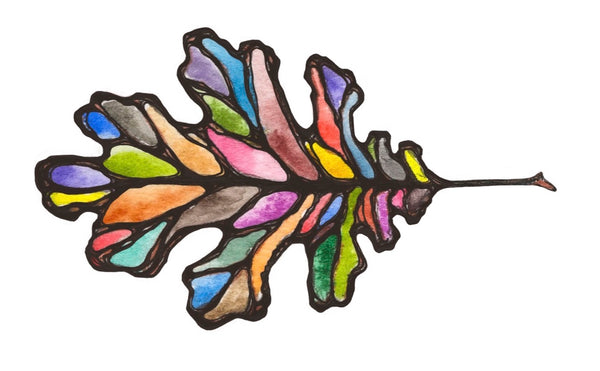
How to Erase Watercolors

One of the biggest fears I've heard about watercolors over the years is that they cannot be erased, that mistakes are irrevocable. Hearing this never fails to send me to my soap box to passionately defend my favorite medium because:
1) It's simply not true!
2) This is the main reason most people are afraid to even try watercolors.
3) Making mistakes is an essential part of the art-making process, and as such something that should be welcomed and embraced.
Watercolor is both literally and figuratively a fluid medium. It is tremendously flexible both in that it is extremely portable, allowing the artist to create almost anywhere, and in the way that colors can be built up, rearranged, and even lifted away.
In this post I'm going to go over a list of the tools and techniques you can use to "erase" watercolors and therefore build your confidence with the medium and add more flexibility to the way your work with them.
1) Lifting

What you'll need: regular watercolor brush or lifting brush (Mine is pictured above.)
How it works: Lifting works about how it sounds. You turn your brush into an eraser to literally lift the paint off of the paper. In essence, your paintbrush functions much like a straw: when it is dry it sucks up water. We rely on this function every time we wet our brush and dip it into our paint. However, it works similarly to touch a dry or nearly dry brush to the painted page. If the page is still wet, the brush will most easily be able to suck the color away. However, you can always re-wet an area to re-activate the paint and then lift it away.
Details: There are a number of factors in play when lifting: paint composition, brush, paper, and how wet/dry the brush and paper are.
The larger the paint pigment particles, the easier it will be to lift the color. Colors with smaller pigment particles will likely stain because the tiny color particles will have worked their way farther into the fibers of the paper. The better you know your colors, the more easily you will be able to quickly assess what options are open to you as you build your paintings.
A true lifting brush is much stiffer (and less absorbant) than a typical watercolor brush. In addition to sucking away the color, it will also gently upbraid the surface of the paper with a subtle scrubbing action.
If your paper is still wet from laying down the color, you will probably be able to just use your watercolor brush to pull out some of the color. If the paper has already begun to dry or finished drying you'll want the extra power of a lifting brush.
I use a Princeton Series 6100 Summit Synthetic Bristle Brushes, Bright, Size 4
Keep in mind: Depending on what techniques you have used in your painting, you should proceed with caution when re-weting your page to lift out color. Different colors will show they have been re-wet especially if they have been laid down with a wash. It is best to experiment with this technique before applying it for the first time.
2) Erasing

What you'll need: sanded eraser
How it works: A sanded eraser is just what it sounds like, an eraser with some grit to it, not unlike sandpaper. Sanded erasers are very aggressive erasers. They can help rub away color, and even the top layer of the paper to recover some white underneath stained paper fibers.
Keep in mind: It is very easy to go overboard with sanded erasers. (Overzealouse users can surprise themselves by rubbing straight through the paper!). In effect, these erasers will damage your paper. They will change the surface texture of the paper. Therefore, painting over an area that you have used a sanded eraser on should be done carefully as it will take the color differently.
I use a Tombow Mono Colored Pencil Eraser
3) Scraping

What you'll need: scraper nib and nib holder
How it works: This method works much like the sanded eraser, but can be more closely related to shaving instead of sanding. You are essentially shaving away the top layer of your paper. I recommend doing this only after you have lifted away as much color as possible.
Keep in mind: Use the same cautions as listed above for the sanded eraser. Scraping your paper should be done very gently and very carefully.
I use Speedball Scratch Knife Nibs with a handmade holder from Two Hands Paperie.
4) Painting Over

What you'll need: opaque white watercolor or gouache
How it works: This technique is about the same as using white-out. You are painting over an area to return its color to match the white of your paper.
Keep in mind: In using this technique to erase color, it is still very different from having virgin paper to paint on. Even though you have a white area again, it has a layer of paint on it. Therefore, paint added over the top of the white layer should be applied with care because a) the white paint can reactivate and move, and b) painting over a paint layer is different from painting on clean, blank paper with open absorption. As with other above listed techniques, I would recommend lifting color first. When adding in white paint made with synthetic pigments it can be wise to use a diluted application first because pigments like Titanium and Zinc White can sometimes appear unnaturally white.
I use Greenleaf & Blueberry Eggshell and Barite White, but I also keep a tube of Winsor & Newton Designers Gouache in Permanent White on hand as well. (Permanent White is usually Titanium White.)
5) Embracing Mistakes
What you'll need: patience, forgiveness, an open mind, and creativity
How it works: Mistakes are an essential part of the art-making process. They lead to new discoveries and build experience. You will become a better artist because of your mistakes, so they really should be celebrated. However, the issue remains about what to do about them when the happen - what happens to the painting? This is both the hard and easy part: it's completely up to you. But deciding how to handle your mistakes is often where the magic happens.
One of my Great-Grandmother Greenleaf's paintings of a flower arrangement has a friendly little beetle crawling across the tabletop underneath the flowers. Apparently the bug started out as an errant paint drop that she then decided to turn into an insect. Trying to imagine this painting without the bug is impossible - it would still be beautiful, but would lack the warmth, honesty, and playfulness that I so enjoy about it.

If you learn to embrace your mistakes, to simply pivot and continue when something unexpected happens in your painting, then you likely will not need any of the previously mentioned techniques. In fact I would strongly suggest that you not learn to rely on them as "erasing" or "correction" techniques. They are nice to have in your tool shed, but I would urge you to learn them as techniques to move you forward instead of backward.
As always, wishing you Happy Painting!


